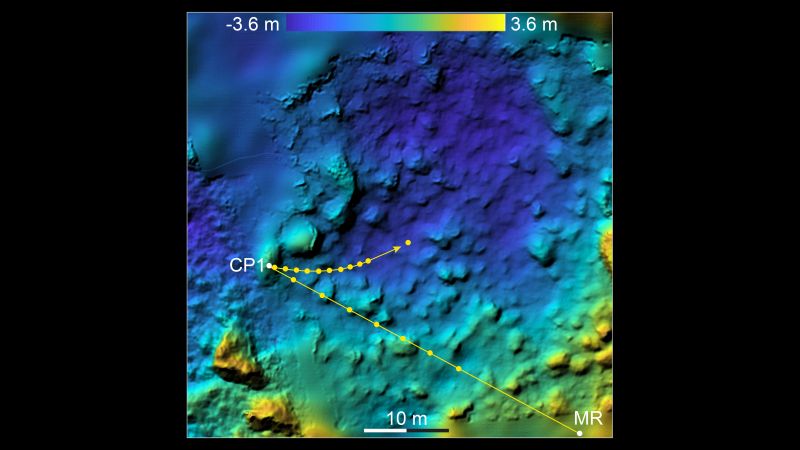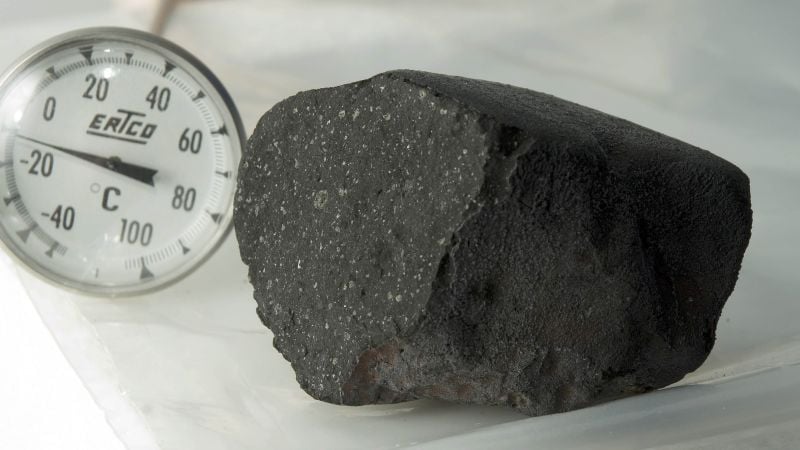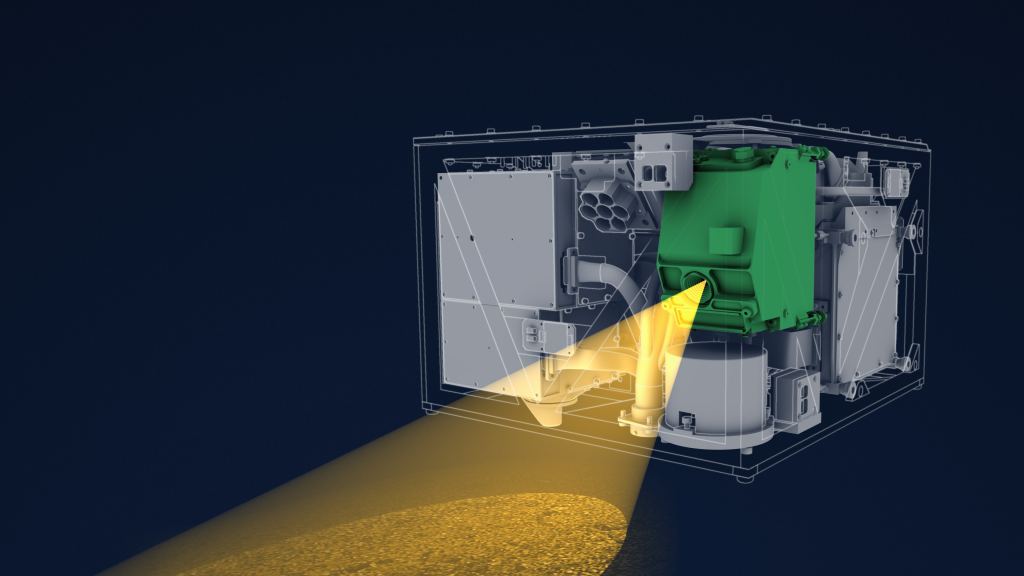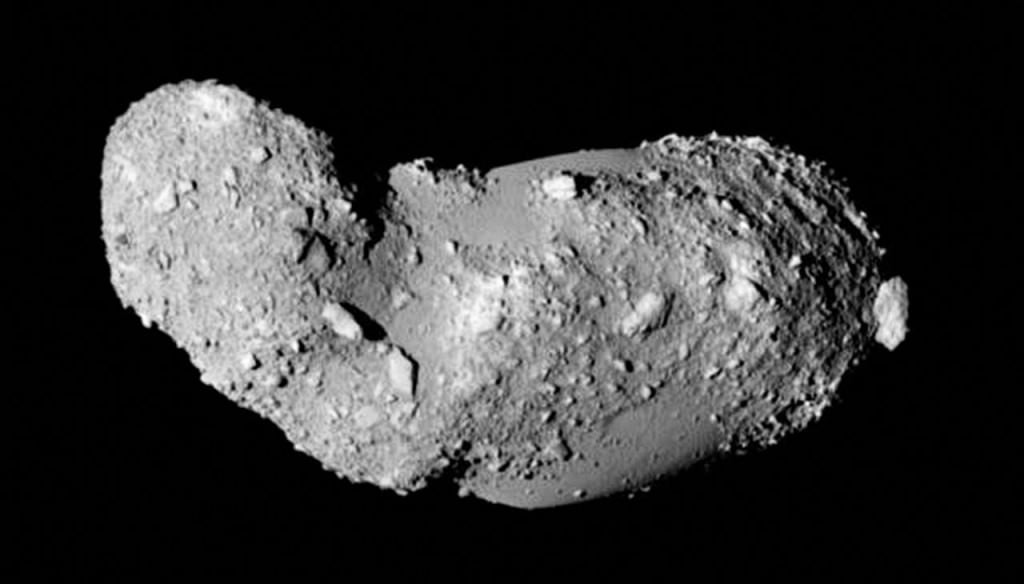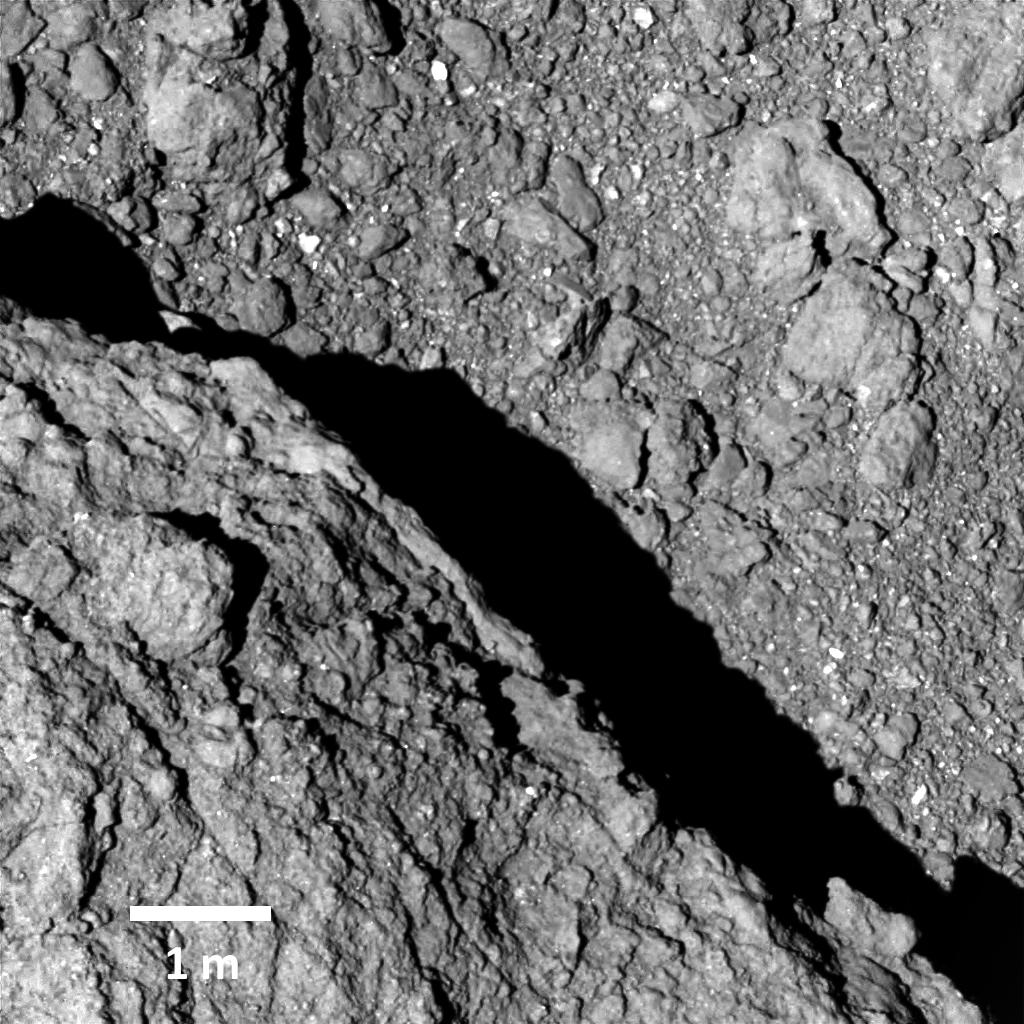When Japan's Hayabusa 2 spacecraft arrived at asteroid Ryugu in June 2018, it carried four small rovers with it. Hayabusa 2 is primarily a sample-return mission, but JAXA (Japan Aerospace Exploration Agency) sent rovers along to explore the asteroid's surface and learn as much as they could from their visit. There's also no guarantee that the sample return will be successful.
They chose Ryugu because the asteroid is classified as a primitive carbonaceous asteroid. This type of asteroid is a desirable target because it represents the primordial matter that formed the bodies in our Solar System. It's also pretty close to Earth.
The sample from Ryugu, which will make it to Earth in December 2020, is the big science prize from this mission. Analyzing it in Earth-based laboratories will tell us a lot more than spacecraft instruments can. But the rovers that landed on Ryugu's surface have already revealed a lot about Ryugu.
One of the four rovers that traveled as part of the Hayabusa 2 mission is MASCOT, or Mobile Asteroid Surface Scout. MASCOT was developed for the mission by the German Aerospace Center (DLR) and the French space agency CNES. MASCOT's mission lasted only 17 hours, and during that time it was able to pursue its goals: to measure the small-scale structure, distribution and texture of the regolith.
"With MASCOT, we have written a small chapter of space history with our Japanese and French colleagues." Hansjörg Dittus, DLR Executive Board Member for Space Research and Technology.
In a paper published in Science, researchers present evidence from MASCOT that sheds light on Ryugu's structure. The paper is titled " Images from the surface of asteroid Ryugu show rocks similar to carbonaceous chondrite meteorites." The study's lead author is Ralf Jaumann, researcher from the DLR Institute of Planetary Research.
MASCOT was an unusual rover design. It was deployed from only 41 meters above Ryugu and is described as a tumbling dice for the way it landed. After tumbling to a stop, it used its internal spring arm to jump to a new location. MASCOT had no wheels.
DLR scientists were able to track MASCOT's path along the surface of Ryugu by examining the images it captured.
MASCOT's images show two types of rocks, both dark. They reflect less than 4.5% of sunlight, similar to charcoal. Type 1 are darkest, with crumpled, cauliflower-like surfaces. Type 2 are slightly brighter, with sharp edges and smooth, fractured surfaces. These images, and other measurements, characterize Ryugu as a "rubble pile" with very little cohesion.
The images from MAScam, the camera on the shoe-box size lander, show small bright spots inside the rocks on Ryugu. This is similar to the oldest and rarest types of meteorites called carbonaceous chondrites.
This class of meteorite is among the oldest rocks in the Solar System, and are remnants from the formation of the first bodies around the young Sun. They're important scientifically because they hold clues to the origin of the Solar System, clues that are near impossible to find on Earth.
It's not just MASCOT images that have uncovered Ryugu's rubble pile nature. Other experiments have shown that Ryugu is not very dense. It's average density is 1.2 grams per cc, which is only slightly more dense than water ice. But since the asteroid is made up of different size rocks of two distinct natures, this means that it's likely riddled with cavities. As a result, Ryugu is probably a fairly fragile body.
It seems to be made up of two types of rocks and boulders, and nothing else. And the two types of rocks are evenly distributed on the asteroid's surface. According to Jaumann, this suggests two possible origins for the asteroid.
"Firstly," explains Jaumann in a press release, "Ryugu could have been formed following the collision of two bodies made of different materials. As a result, it would have broken up, before the fragments came together under the influence of gravity to form a new body made up of the two different types of rock. Alternatively, Ryugu could be the remnant of a single body whose inner zones had different temperature and pressure conditions, thus resulting in the formation of two types of rock."
There are appears to be no dust on Ryugu either, a somewhat surprising result for Jaumann and other team members. This lack of dust hints at other, complex geophysical properties, according to Jaumann. This lack of dust is similar to asteroid Itokawa, which Hayabusa 2's predecessor Hayabusa visited.
"Ryugu's entire surface is littered with boulders, but we have not discovered dust anywhere. It should be present, due to the bombardment of the asteroid by micrometeorites over billions of years, and their weathering effect. However, as the asteroid has very low gravity – only one-sixtieth of that experienced on Earth's surface – the dust has either disappeared into cavities on the asteroid or has escaped into space. This gives an indication of the complex geophysical processes occurring on the surface of this small asteroid."
Ryugu is a near-Earth asteroid (NEA) and its proximity to Earth is one of the reasons JAXA chose it for the Hayabusa 2 mission. Though Ryugu itself probably poses no threat to Earth, understanding it might help us prepare better for other NEAs that may threaten Earth in the future.
In a press release, Ralf Jaumann wondered what it would be like if an asteroid similar to Ryugu approached Earth. "If Ryugu or another similar asteroid were ever to come dangerously close to Earth and an attempt had to be made to divert it, this would need to be done with great care. In the event that it was impacted with great force, the entire asteroid, weighing approximately half-a-billion tonnes, would break up into numerous fragments. Then, many individual parts weighing several tonnes would impact Earth," said Jaumann.
All eyes are on the sample-return part of Hayabusa 2's mission now. It's successfully collected both surface and sub-surface samples, and they'll reach Earth in December 2020. But MASCOT's an important part of the mission too, and the MASCOT team is proud of what they've accomplished.
"The evaluation of the MASCOT experiments is yielding highly interesting results. To me, it is fascinating to see what this small, high-tech box has achieved on Ryugu, an asteroid 300 million kilometres from Earth," said Hansjörg Dittus, DLR Executive Board Member for Space Research and Technology. "With MASCOT, we have written a small chapter of space history with our Japanese and French colleagues."
More:
- Research Paper: Images from the surface of asteroid Ryugu show rocks similar to carbonaceous chondrite meteorites
- Wikipedia: 162173 Ryugu
- JAXA: Hayabusa 2
- DLR Press Release: The near-Earth asteroid Ryugu – a fragile cosmic 'rubble pile
 Universe Today
Universe Today

